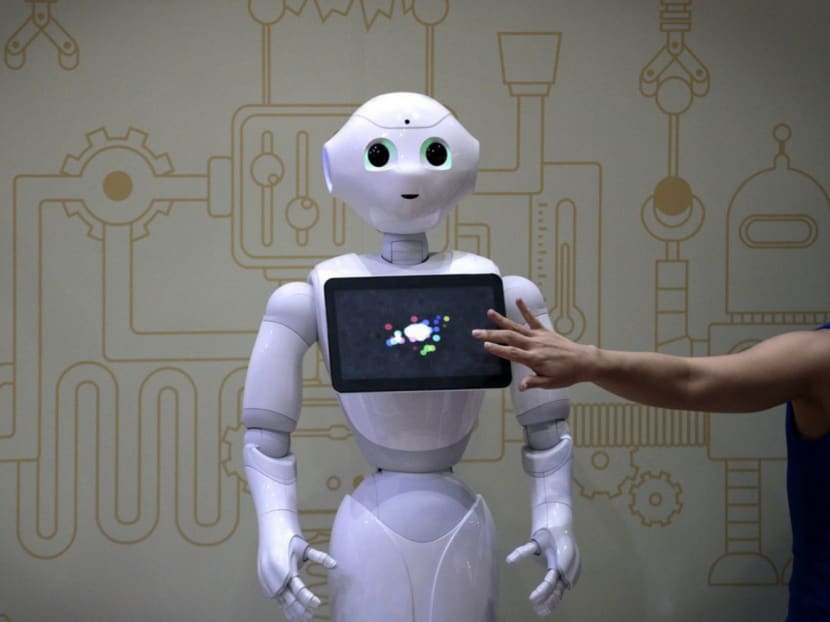Japan robot maker to tackle loneliness with R2-D2-style machine
TOKYO — After a stint at SoftBank creating the world’s most famous companion robot, Mr Kaname Hayashi, the “father” of Pepper, is developing a new machine that is smart enough to respond to a person’s solitude but small enough to blend into homes.
TOKYO — After a stint at SoftBank creating the world’s most famous companion robot, Mr Kaname Hayashi, the “father” of Pepper, is developing a new machine that is smart enough to respond to a person’s solitude but small enough to blend into homes.
The robot envisioned by Mr Hayashi, who left SoftBank last year to start his own company called Groove X, will bear little resemblance to Pepper, the state of the art humanoid that entertains people by talking and responding to their emotions.
Its concept will be similar to R2-D2, a robot from the Star Wars films that does not speak words and only beeps but still creates empathy and a bond between human and machine.
“If you ask whether you like R2-D2 or the talking humanoid C-3PO, 80 per cent of the people say they like the non-verbal robot,” said Mr Hayashi. “We want to create a robot that can carry out communication on the subconscious level.”
As with SoftBank and Mr Hayashi, researchers at leading technology companies from Google and Amazon to Facebook are exploring new ways for people to interact with machines. A key technology behind the race is deep learning — a form of artificial intelligence that tries to mimic the functioning of layers of neurons in the human brain. But even as companies compete to install “brains” and learning capabilities into cars, consumer electronics and other devices, how smart do machines need to be to live with humans in homes and hospitals?
In Japan, the question has captivated researchers as Prime Minister Shinzo Abe looks to spread the use of robotics from factories to the broader society, to address a growing elderly population and a shortage of labour accelerated by the country’s aversion to immigration.
After decades focusing on the mechanics underlying the machines, researchers and companies are turning their attention to the emotional impact of robotics on human beings.
Mr Hayashi, who was poached from Toyota by SoftBank founder Masayoshi Son in 2012, also grappled with the question of how high-tech machines must be to make people happier as he developed Pepper.
“When I visited nursing homes for the elderly and asked them how we could improve Pepper, they asked me to make Pepper’s hands warmer. It had nothing to do with the cloud technology, AI or big data,” said Mr Hayashi.
His new robot, which is expected to hit the market in 2019, will also need enough learning capability and voice recognition to suggest hidden depths of comprehension. But Mr Hayashi said it does not need to be smart enough to deeply understand human emotions or be designed to look like a human.
At Fujita Health University Hospital in suburban Nagoya, Dr Eiichi Saitoh, a professor who runs the rehabilitation department is working with Toyota to develop robots that help the victims of strokes and other debilitating brain disorders regain their sense of balance and muscle control.
While there are robots to lift immobilised patients out of their beds, the rehabilitation exercises using Toyota’s machines require patients to participate by playing simple video games, such as tennis.
Dr Saitoh said the robots are designed to assist patients only with exercises in order to encourage them to recover on their own. “Patients don’t feel like they are being treated by robots,” he adds. In his new project, Mr Hayashi is aiming to develop a robot that is bigger than Sony’s Aibo dog but smaller than Pepper that can help to relieve stress. “We want to focus on robots that do not replace human jobs but robots that boost people’s performance.” FINANCIAL TIMES







